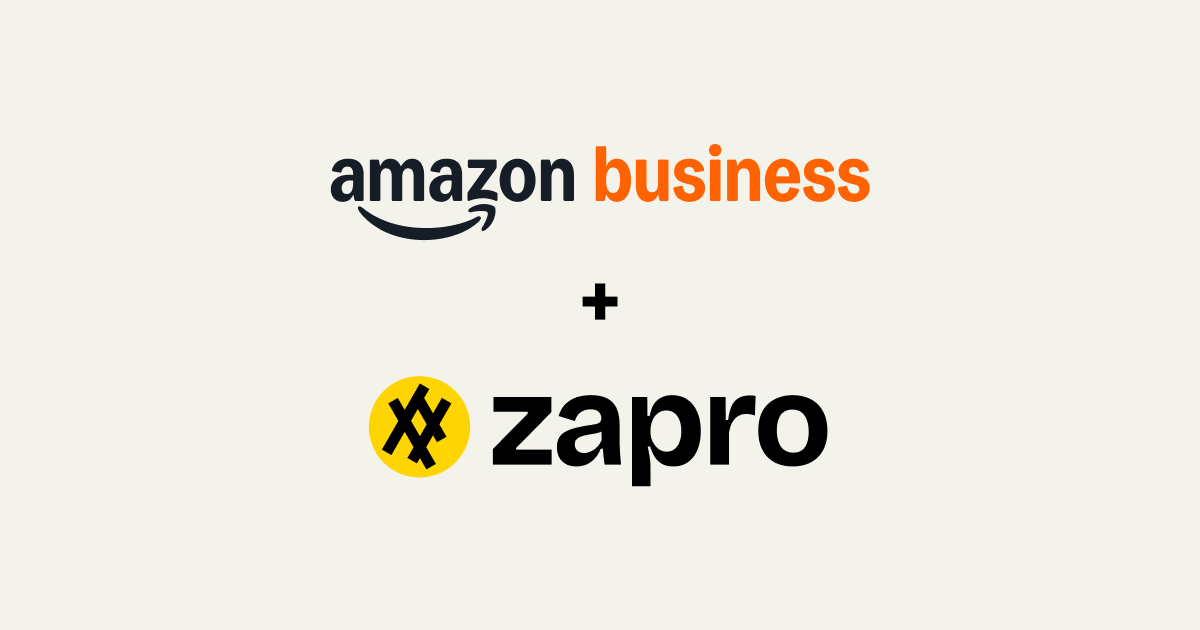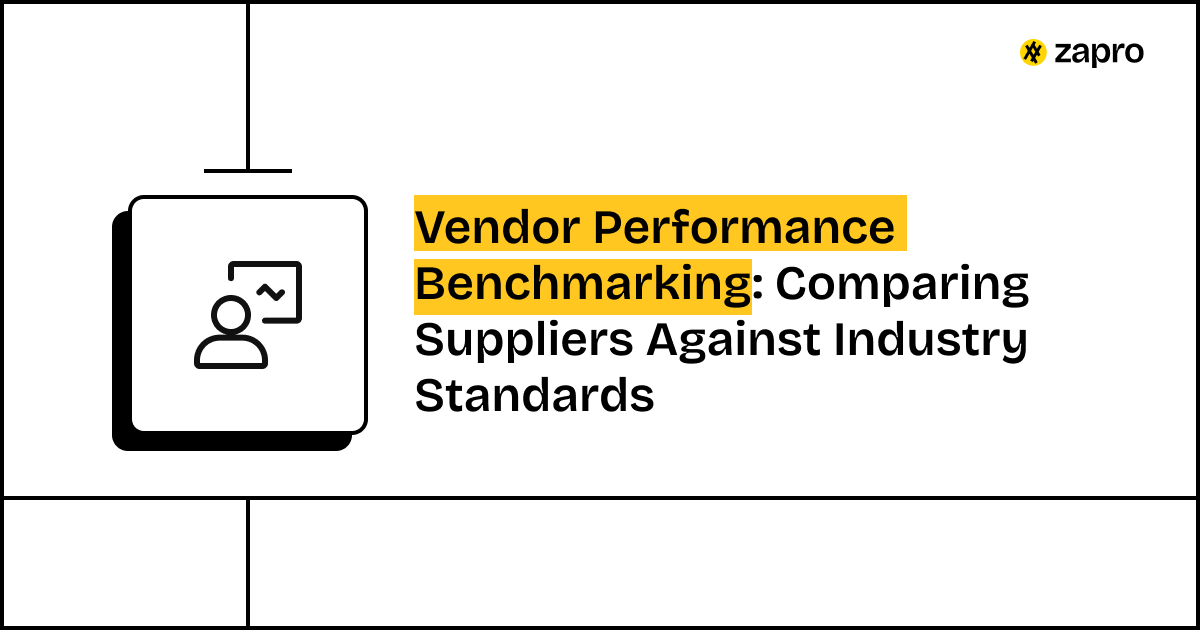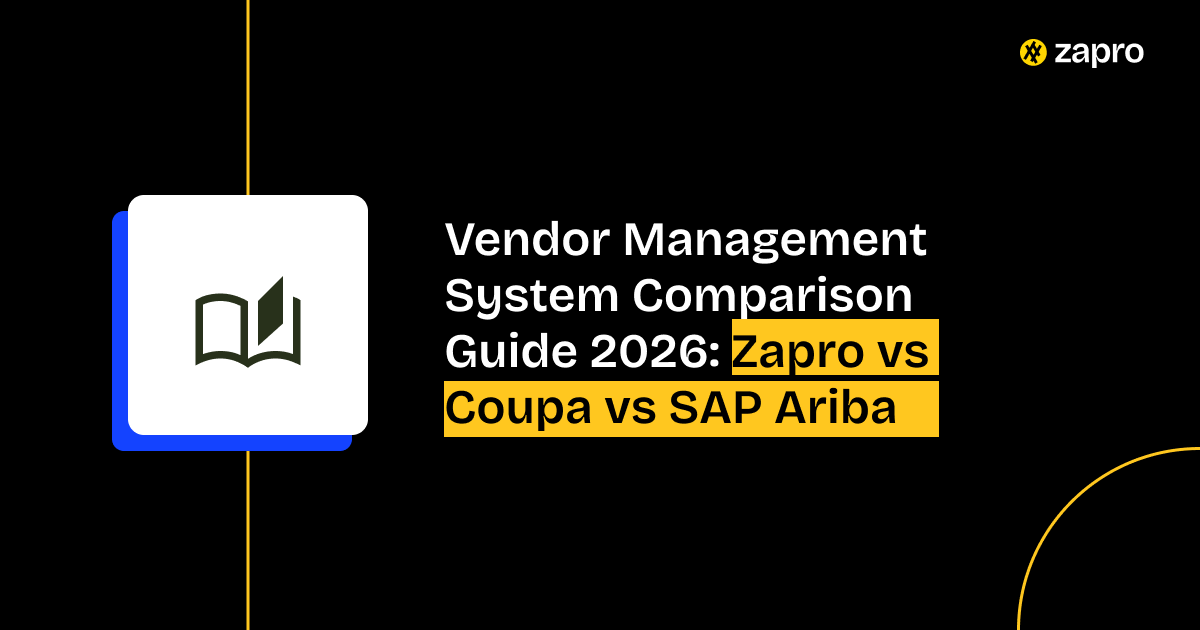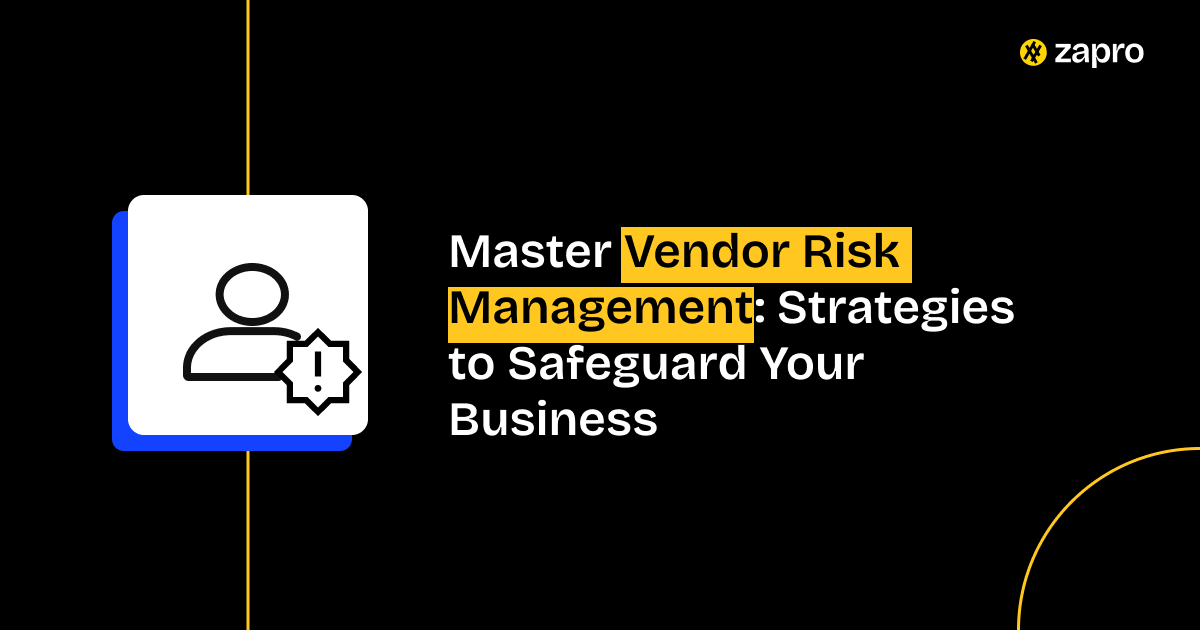A few decades ago, many businesses treated vendor performance management (VPM) like a purchasing team. Procurement teams would place the orders, the goods were delivered, invoice was paid and a basic scorecard tracked the minimum agreed upon metrics. Today, that approach is no longer acceptable as everyone knows the importance.
The global market is even more accessible today with the advent of the latest technologies 24/7. In such a competitive environment supply chain resilience is paramount, getting maximum value from your suppliers is non-negotiable. Therefore, establishing a strategic sourcing best practices is of paramount importance. This helps move every supplier relationship into an outstanding source of innovation, growth, and profitability.
In this blog post, we outline essential details on how to implement and optimize vendor performance management best practices to drive supplier value optimization and secure genuine vendor ROI for your business.
Introduction: The Strategic Imperative of Vendor Performance Management
The role of Procurement has dramatically shifted. We’re not just cost cutters; we’re value creators. This means our focus must be on maximizing vendor ROI, looking beyond the initial contract price to the overall long-term total cost and benefit a supplier brings.
When VPM is done right, it serves as the crucial mechanism for effectively translating supplier capabilities into tangible business results. It’s the engine that powers continuous improvement vendors and ensures your strategic partnerships adhere to your company’s growth trajectory.
Moving Beyond Basic Scorecards: A Holistic Approach
A basic scorecard might track on-time delivery (OTD) and defective parts per million (DPPM). While crucial, these are mere performance indicators. Here are the Vendor performance management best practices that cover at great length:
- Operational Excellence: Timeliness, quality, reliability.
- Financial Value: Cost savings, productivity gains, pricing structure.
- Relationship Health: Collaboration, communication, willingness to innovate.
- Risk & Compliance: Security regulation adherence, financial stability, ethical practices.
Establishing a Robust VPM Framework: Key Pillars
The top-notch VPM program throws light on details and helps measure performance and track progress. This is accomplished only when it is built on a solid and standardized foundation.
Defining Clear Objectives & KPIs Aligned with Business Goals
Every vendor performance management initiative must adhere to your organizational strategy.
Does your company wish to attain rapid growth into a new market? Then, your strategic sourcing best practices should include KPIs that measure the supplier’s ability to scale production quickly and meet new regulation requirements.
These objectives should be developed by both the procurement and supplier teams. They need to understand well and state to the point that how their role directly impacts your business outcomes. This will help to clearly draft the targets which would be mutual and motivational.
Standardizing Performance Data Collection and Analysis
One of the biggest inadequacies in VPM is fragmented data. You cannot compare apples to apples if one supplier reports OTD based on shipping date and another reports based on receiving date.
- Standardize Metrics: Define every KPI painstakingly and apply the same calculation logic to all relevant suppliers.
- Centralize Data: All performance data should feed into a single pane of glass dashboard without any delay. This eliminates manual painstaking aggregation and reduces hazards associated with data silos.
- Focus on Leading Indicators: Track metrics that predict future success or failure (e.g., supplier change request response time, which predicts delivery risk) rather than just lagging indicators (OTD, which only tells you what already happened).
Implementing Regular Review Cycles and Feedback Loops
Performance management is not an annual event; it’s a continuous improvement vendors cycle.
- Quarterly Reviews: Focus on operational metrics, inadequacies, and corrective actions.
- Annual/Strategic Reviews: Focus on vendor ROI, innovation, market changes, and strategic alignment for the rapid growth and future of the partnership.
- Automated Feedback: Use technology to provide effortlessly timely, data-driven feedback whenever a threshold (positive or negative) is crossed. This allows for immediate course correction.
Learn about vendor performance management tools
Best Practices for Driving Supplier Engagement and Collaboration
The highest vendor ROI comes not from controlling suppliers, but from collaborating with them.
Fostering a Culture of Continuous Improvement
The main aim is to encourage continuous improvement vendors by shifting the focus from blame into opportunity.
- Joint Problem-Solving: When an inadequacy is flagged, work side by side with the supplier to find the root cause. This showcases strong partnership and builds trust.
- Shared Goals: Establish outstanding, stretch goals that benefit both parties (e.g., “Reduce overall freight costs by 10% next year,” allowing the savings to be split).
- Capacity Building: Enhance the knowledge of your suppliers for a grand harvest. Training them or sharing the knowledge of your best practices paves way to increase their capability and directly benefits you.
Incentivizing High Performance and Addressing Underperformance
Reward and recognition are key vendor performance management best practices.
- Incentivize: Grant high-performing suppliers with preferential terms, longer contracts, first access to rare new business, or a public award. This makes top performance fabulous and competitive.
- Address Underperformance: Have a transparent, structured process for managing inadequacies. This includes documented warnings, corrective action plans (follow up), and clear consequences for failure to adhere to the plan. This effectively ensures accountability and minimizes risk hazards.
Leveraging Technology for Enhanced Visibility and Automation
Technology is the engine that drives modern VPM.
- Centralized Dashboards: Zapro’s platform offers a single pane of glass view which helps assimilate the facts on the overall health of their supplier ecosystem in a breeze.
- Automated Workflows: Painlessly automate tasks like data collection, feedback generation, and sending review meeting invitations. This frees your team from mere administrative roles to focus on strategic sourcing best practices.
- Risk Monitoring: Integrate risk data (financial, geopolitical, compliance) side by side with performance data to provide an incredible picture of supplier value optimization.
Measuring and Communicating ROI from VPM Initiatives
Demonstrating vendor ROI proves the strategic value of your VPM program to the executive team.
Quantifying Cost Savings, Efficiency Gains, and Risk Reduction
The vendor ROI calculation must cover many facets:
- Cost Savings: The calculation should clearly state the savings achieved through negotiation which are termed as direct savings. On the other hand, it should also throw light on indirect savings from continuous improvement vendors.
- Efficiency Gains: Internal teams’ productivity would naturally increase because when there are right suppliers onboard, it would eventually lead to less management effort. Try quantifying the time saved on expediting or follow up on late deliveries.
- Risk Reduction: Assign a quantifiable value to mitigating potential dangers. For example, quantify the reduced cost of business interruption due to improved supplier disruption planning.
Reporting VPM Success to Stakeholders
Present your findings effectively to your C-suite. Use clear visuals (like the Graph: Impact of VPM on Supplier ROI [Graph: VPM impact on supplier ROI]) and focus on the strategic sourcing best practices that led to the results. Show how improved supplier value optimization directly contributed to rapid growth or profit targets.
Overcoming Common VPM Challenges
Data Silos and Inconsistent Metrics
This is a common inadequacy. The solution is executive sponsorship for a unified platform. You must enforce the standardized metrics across all departments (sourcing, operations, finance) and mandate that data adhere to the central VPM framework.
Supplier Resistance and Engagement Issues
Sometimes, suppliers are resistant because they fear the VPM process will be used punitively. Steer clear of this by:
- Transparency: Share the methodology painlessly and openly.
- Focusing on Mutual Gain: Frame the continuous improvement vendors initiative as a pathway to earning more business and rapid growth together.
- Incentivizing: Show them the fabulous benefits of achieving a higher tier of performance.
Future Trends in Vendor Performance Management
The future of strategic sourcing best practices lies in leveraging AI and machine learning to analyze the many facets of supplier data. We’ll see systems predict inadequacies before they happen, suggesting optimal performance targets based on incredible global supply chain data, and creating a truly fantastic level of supplier value optimization.
Zapro.ai: Your Partner in Driving Supplier Value
Zapro.ai provides the single pane of glass necessary to implement these vendor performance management best practices. Our automated dashboards, tailored reporting, and centralized data hub free your team from mere administrative overhead, allowing them to focus on strategic sourcing best practices and maximize vendor ROI.
Zapro.ai ensures your VPM program is effective by defining outstanding KPIs and tracking follow up action. It can help you to effortlessly drive continuous improvement vendors, and delivers quantifiable results.
Conclusion: Elevating Vendor Relationships for Sustainable Growth
Vendor performance management is the key to sustainable rapid growth. Therefore, it can never be omitted or overlooked; it is the crucial key to supplier value optimization as well. By adopting these vendor performance management best practices, focusing on collaboration, data integrity, and continuous improvement vendors, you transition from a transactional buyer into a strategic partner.
This shift will not only effectively mitigate dangers but will ensure that your supplier relationships remain an outstanding source of vendor ROI and competitive advantageously for years to come.
FAQ
1. How often should companies conduct vendor performance reviews?
Review frequency depends on vendor criticality. Critical vendors need quarterly reviews, standard vendors semi-annually, and low-risk vendors annually. However, modern best practice involves continuous monitoring through automated platforms. Zapro’s real-time dashboards eliminate waiting for scheduled reviews—track performance 24/7, identify issues instantly, and take action immediately. Start managing smarter with Zapro.
2. What’s the difference between vendor scorecards and dashboard?
Scorecards are periodic evaluation tools measuring past performance with numerical ratings, ideal for formal reviews. Dashboards provide real-time visualization of current performance data for proactive management. Zapro combines both—automated scorecards for comprehensive assessments plus live dashboards for continuous monitoring. Get complete visibility in one platform. Try Zapro free.
3. How can companies measure vendor ROI beyond cost savings?
True vendor ROI includes innovation contributions, time-to-market improvements, risk mitigation value, strategic enablement, and productivity gains—not just cost reductions. Zapro’s intelligent analytics track all these dimensions automatically, calculating comprehensive ROI with both quantitative metrics and weighted qualitative factors. See your complete vendor value—start with Zapro today.
4. What are the most common mistakes in vendor performance management?
Common mistakes include treating it as a periodic activity rather than ongoing process, focusing only on costs, lacking clear KPIs, using fragmented systems, not sharing vendor feedback, and applying one-size-fits-all approaches. Zapro eliminates these pitfalls with continuous monitoring, customizable KPIs, centralized data, automated feedback loops, and tiered management strategies. Transform your vendor management—get started with Zapro.
5. How should companies handle underperforming vendors?
Start with data-driven documentation of performance gaps, hold collaborative discussions to identify root causes, create improvement plans with clear timelines, and implement escalation procedures if needed. Develop contingency plans while maintaining professional relationships. Zapro streamlines this entire process—automated performance alerts, documented improvement plans, progress tracking, and alternative vendor recommendations. Manage underperformance confidently with Zapro’s intelligent platform.
Don’t miss our weekly updates
We’ll email you 1-3 times per week—and never share your information.

 Healthcare
Healthcare Financial Services
Financial Services Technology
Technology Venture Capitalist
Venture Capitalist Chief Procurement Officer
Chief Procurement Officer Chief Financial Officer
Chief Financial Officer




